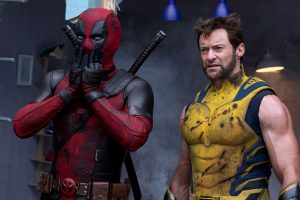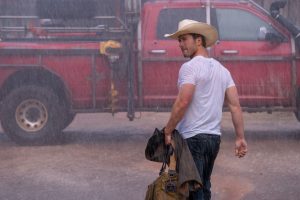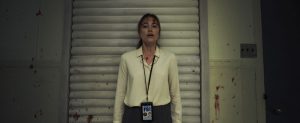Reviews include Deadpool & Wolverine, Doubles, and Mountain Queen: The Summits of Lhakpa Sherpa.
Festival Diary: The 29th Fribourg International Film Festival
April 10, 2015
By José Teodoro
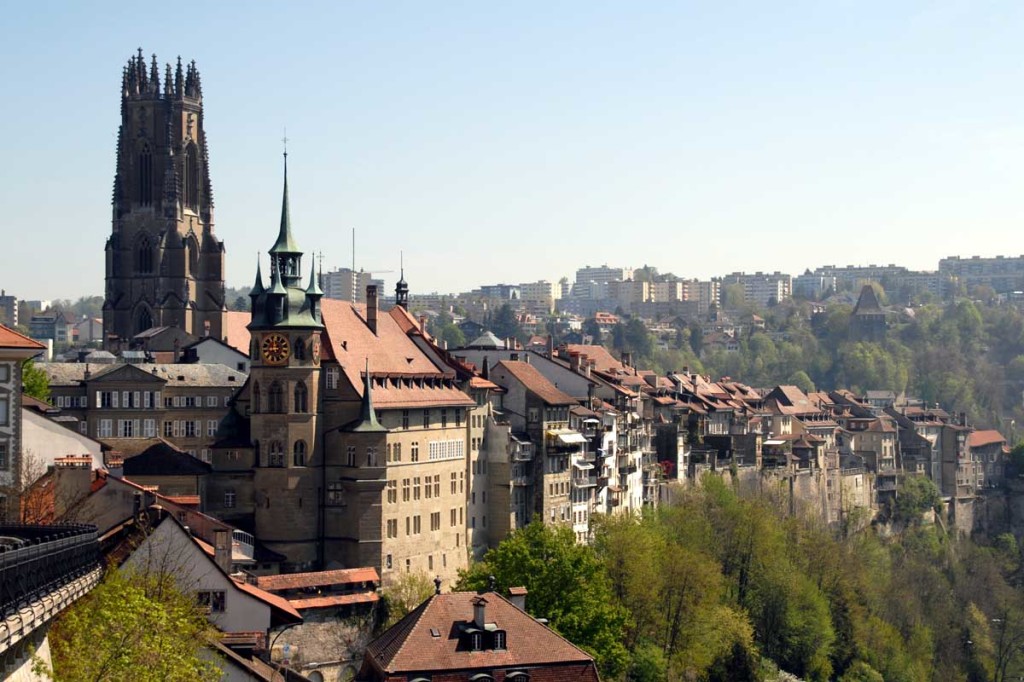
It is a United Nations of film festivals, its programming focused on representing as wide an array of developing countries as possible, its opening and closing ceremonies unfolding in an idiomatic merry-go-round of exactingly enunciated French, German, English and even Italian, the madrelingua of only 8% of the country’s roughly 8,000,000 inhabitants. (If they also threw in a dash of Romansh, spoken by less than 1% of the population, my untrained ears failed to catch it.) We are, of course, in Switzerland, a serious contender for the most civilized country in the world (a status that’s persisted in my mind since I first beheld the self-cleaning Swiss toilet in Peter Mettler’s Gambling, Gods & LSD), producers of fine chocolate, time pieces and utility knives, famously neutral yet fiercely en guard, and apparently the only nation Jean-Luc Godard deemed worthy of calling home in his golden years of curmudgeonly reclusion.
But I don’t want to give the impression that the Fribourg International Film Festival, which occurs every March in one of Western Europe’s most unreasonably adorable cities, is a paragon of political nicety. On the contrary, part of what makes this festival genuinely admirable, and very worth your while, is that many of the politics that determine the programming of comparable festivals—e.g.: the politics of premiere status, the “I’ll show your shitty movie if you send your grumpy famous person” politics of negotiation—seems absent from the idiosyncratic programming here, which looks to be dictated mainly by the catholic tastes of FIFF Artistic Director Thierry Jobin, the screening habits of an apparently pretty open-minded and sophisticated film-going public, and the festival’s general mandate to use art film to mirror a world fraught with inequality, injustice and conflict. Last year FIFF programmed a landmark Iranian series—the same series that was recently remounted at TIFF Bell Lightbox. This year FIFF offered a Syrian series curated by Ossama Mohammed, who gave a masterclass and whose arresting Silvered Water, Syria Self-Portrait, co-directed with Kurdish activist Wiam Simav Bedirxan,was screened.
There was also, oddly enough, an awful lot of Canada at FIFF 2015. The impressive Indigenous North American Cinema sidebar included Atanarjuat, Before Tomorrow, Reel Injun, Rhymes for Young Ghouls, Smoke Signals, The Journals of Knud Rasmussen and three films from veteran documentarian Alanis Obomsawin, who also curated a series of shorts and was the president of the International Jury. (And, incidentally, is also a demon on the dance floor.) Meanwhile, the Terra Erotica sidebar included Colombian-Canadian filmmaker Lina Rodríguez’s feature debut Señoritas (a film with which I have some peripheral involvement). I felt an uncharacteristic burst of pride in the fact that these were the kinds of films representing my country here in Fribourg—and that pride rapidly withered when I repeatedly had to explain to various colleagues that none of the filmmakers featured, not even, say, Zacharias Kunuk, were exactly what you could call household names back home.
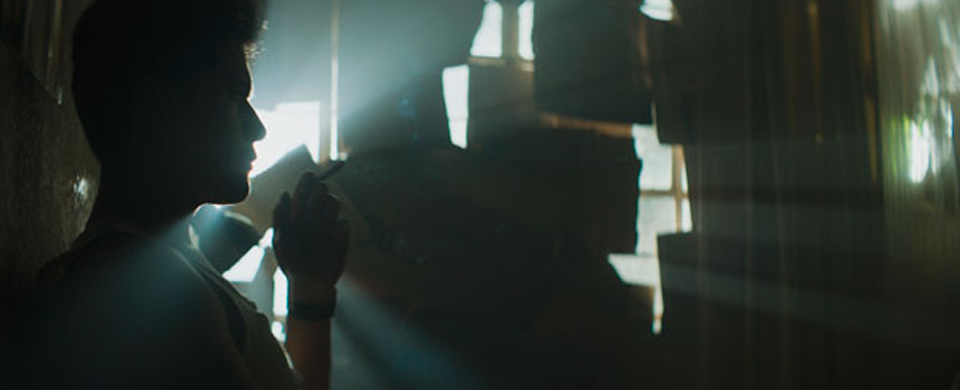
As president of the FIPRESCI Jury my time in Fribourg was largely devoted to seeing and discussing films screening in the International Competition, a dozen diverse titles that were indeed thoroughly international in scope. (For the record, Africa was the one major filmmaking region unrepresented in this year’s lineup.) Closest to home was González, the surprise winner of the festival’s main prize, the Regard d’or. The feature debut of Chilean-born, Mexico City-based director Christian Díaz Pardo, González follows one Sr González González, played by the remarkable Harold Torres, who previously starred in the excellent low-key border-crossing comedy Norteado, and who served as a producer on this film. One of god’s lonely men, González has, like millions before him, come to Mexico City—superbly evoked in the images of balconies, looming buildings, hazy skylines and crowded subway cars—from some unspecified elsewhere with no special prospects. He’s plagued with debts and lacks special skills or advanced education, but he owns a decent suit, is scrupulous about grooming, and is determined to find work. He lands a job in the call center of la Iglesia de la Luz Universal, an evangelical organization fronted by the charismatic Brazilian TV-pastor Elias (Carlos Bardem). From the get-go it’s made abundantly clear to González that his job is to let no caller complete a spiritual query without getting aggressively hit up for a donation—and the poorer the pilgrim, the more likely they are to part with their pesos. González is enormously attracted to the hypnotic, even erotic power wielded by Pastor Elias and seeks to be taken under his wing. This aspect of González’s largely opaque persona will briefly prompt memories of Freddie Quell in The Master, though it will eventually become clear that the template for González is Taxi Driver—the homage becomes explicit with the introduction of Betsabé (Olga Segura), the unfortunate object of González’s desire and a true believer in Pastor Elias and the Church, just as Cybil Shepard’s Betsy was a true believer in the Joe Palantine campaign. The film’s relationship to Taxi Driver is in many respects what holds it together, but it’s also what limits its scope and plausibility. Following a bravura sequence in which our antihero unexpectedly commandeers a sermon, the film’s bloody finale renders González something of a grotesque folk hero akin to Travis Bickle, but this conclusion feels fanciful, and less cogent than the film’s intriguing set-up.
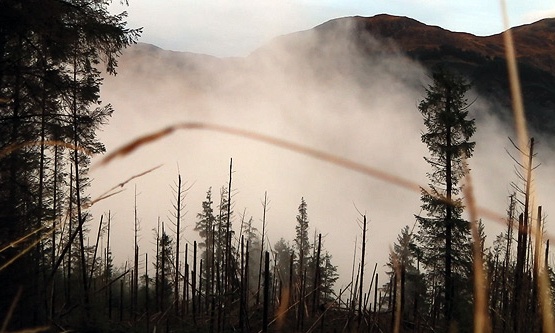
Life May Be, which was awarded the Don Quixote prize by the FICC Jury, will likewise be of special interest to the cinephile, though this epistolary essay film co-directed by UK critic and historian-turned-filmmaker Mark Cousins and Tehran-born, London-based filmmaker Mania Akbari should engage anyone drawn toward an one-on-one dialogue about culture, politics and travel generally. Cousins is articulate and open-hearted in his admiration for Arbari, who he’d met only once before composing the first of the five video-letters that constitute Life May Be. Image-wise, this inaugural video-letter consists of a single sustained shot of fog slowly lifting off a Scottish valley. As the landscape is undressed Cousins praises the use of sequence shots in Akbari’s films—and I love the fact that when we see and hear Akbari’s first video-letter to Cousins, sequence shots are clearly the farthest thing from her mind. She offers instead a rapid montage of stills and videos that describe the life she left behind in Iran, her subsequent travels as an artist-in-exile, and her new life in London. As this dialogue continues the formal strategies and topics of discussion continue to shift, though the central thematic focus is on bodies and liberty, on the repression of women’s bodies in Iran, on the use of bodies in poetry, politics and art, on the ways time, motherhood and illness change the body. Life May Be often put me in mind of a book I really love, I Send You This Cadmium Red, a collection of correspondence between British author and art critic John Berger and artist and publisher John Christie, which was recently adapted into a gorgeous stage production directed by Daniel Brooks, scored by Gavin Bryars, and starring Julian Richlings and John Fitzgerald.
The last film I’d like to single out from the International Competition is, happily enough, our International Critics Prize winner. The Valley, from Lebanese director Ghassan Salhab, screened at TIFF 2014, though I hadn’t seen it there. The film opens with striking, enigmatic images of a camellia, bobbing in the sun, a bisected snake, still writhing on tarmac, and a middle-aged man, exuding bafflement, his white shirt bloodied, rising to his feet under a cloudless, powder blue sky. We’re deep in a place of not-knowing—this is, after all, the story of an amnesiac—but everything tells us that what we’re seeing and hearing was crafted by filmmakers who know how arrange shards, how to layer, how to use faces so as to attain the optimum balance of ambiguity and this charged air in which histories float, unspoken yet, between some characters at least, understood. Every face in The Valley is interesting—a good thing when your characters are so tight-lipped. Every window shows both interiors and exteriors. And when there is no glassy surface to provide us with two images to behold at once, we get instead a beguiling superimposition, different angles on the same zone of interest. The Valley tells its story through a series of palimpsests. There is always a private, intimate, tensely quiet world and a greater, louder, more chaotic world reeling just outside.

Our unnamed amnesiac (Salhab regular Carlos Chahine) is taken in by quintet of strangers to their agricultural compound, a bucolic idyll that we gradually come to understand is being used for some clandestine activity. Some of the amnesiac’s hosts are uneasy with his presence. Who is he? Did someone send him here? Could he be a threat to their operation? Others are intrigued by him. As she tends to one of his wounds, Carole (Carol Abboud, another Salhab regular), the older of the group’s two women, says to the amnesiac, “I was a nurse in another life.” It’s her first line of dialogue, spoken perhaps 20 minutes into the film—this is a really reticent bunch—and a brilliant ice-breaker. Everyone in this film has another life: Carole, the amnesiac, the others in the house, even the much younger woman, Maria (Yumna Marwan), who makes moody pictures with charcoal. Even the mysterious donkey, who’s wandered onto the group’s property. The donkey serves as comic relief, not to mention as a nod toward the four-legged star of Bresson’s Au hasard Bathazar, though, like the amnesiac, this donkey could very well be a Trojan horse. While this chamber drama of suspicion unfolds we receive hints of the greater tensions rising in the world beyond the compound’s perimeter: the military checkpoints the group passes en route, the radio broadcasts that speak of large-scale acts of destruction. On top of this there are signs, emblems from antiquity, that allude to the possibility of some spectacular apocalypse.
We are, to be sure, in the Middle East. We’re also in a series of rooms: a vast kitchen, with much air and many windows, or a laboratory, sterile, with beakers of varied shape and size filled with coloured fluids. These are communal spaces, and for all the disquiet permeating The Valley there are several scenes that, at least fleetingly, provide a sense of community. When the characters connect they do so through acts of physical release: sex, eating, music and dancing. The only glimmers of his past the amnesiac receives come through his remembering of some old love song, which is eventually recognized by Carole. Music lifts the characters out of their seats and, to some extent, out of their unease. We see them dancing in that kitchen, and, in another palimpsest, Salhab shows us this dancing from two angles at once—a cubist dance scene, and one that emphasizes the film’s undercurrent of panoptical foreboding, that watchful double-eye, perhaps searching scenes some tiny tell that might give the game away. But, in one of the film’s later, more enigmatic moments, we also see Maria dancing alone in her room, aptly enough to Joy Division’s chilly anti-anthem ‘Isolation.’ (I rather like that fact that deep into in this film riddled with enigma Salhab offers us a musical cue whose very title is 100% thematically on-the-nose.) Does Maria dance differently when the others can’t see her? Or do each of these characters, save the amnesiac, always comport themselves as though someone is watching, whether that someone is a legal authority seeking opportunity to pounce and make arrests, an ostensible ally looking for a chance to betray the others, an interloper, an angel, or a god. Or us. We’re watching. At least I hope we are. Which is to say that I hope The Valley will find an audience outside of the festival circuit.
Portions of this article appeared in a different form in a review of The Valley for fipresci.org.

